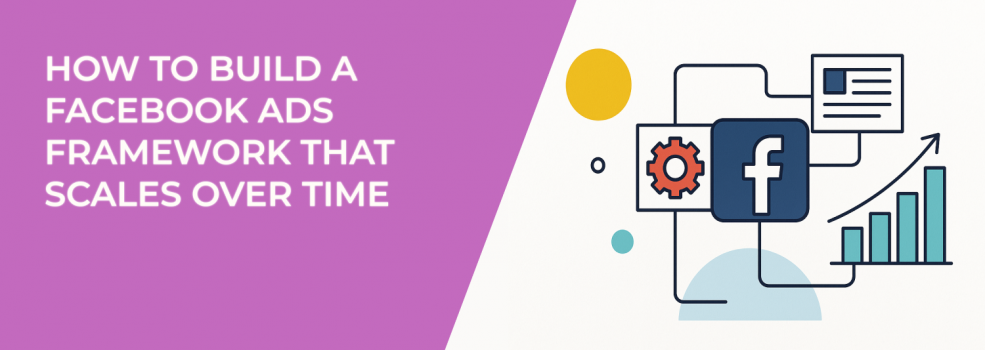If you're running Facebook ads, you already know the struggle — campaigns that perform well one week might tank the next. ROAS goes up, then crashes. You duplicate an ad set and the results go haywire. Scaling feels like trying to build a house on quicksand.
But what if you could build a stable system instead of just chasing results week by week?
A smart Facebook ads framework doesn’t just get you results now — it keeps working as you grow. Here's how to build one that actually scales.
1. Think Framework, Not Campaign
Most advertisers build Facebook campaigns like short-term bets: quick wins, fast tweaks, and lots of guesswork. That works — until it doesn’t.
A scalable framework focuses on structure. You build around data, process, and control, not hope. Think in layers:
-
Cold audiences at the top, where you’re testing interest and offers.
-
Warm retargeting in the middle, where you nudge people back in.
-
Bottom-funnel ads for conversion, where you seal the deal.
Treat each part like a permanent fixture in your system — something you’re always refining, not rebooting from scratch.
2. Stop Chasing Winners — Start Testing Methodically
Testing doesn’t mean throwing 10 creatives at the wall and hoping something sticks. Scaling requires structured creative testing.
Here’s what to focus on:
-
Break creative into elements: image, headline, hook, offer. Test one variable at a time so you actually learn what works.
-
Use consistent naming conventions in Ads Manager so you can track results clearly (especially when testing).
-
Set a minimum learning period — don’t judge performance too early. Let ads run long enough for Facebook’s algorithm to stabilize.
Want to go deeper? See this guide on Facebook ad targeting strategies for better control over your audiences.
3. Build Audiences You Can Rely On
Audience fatigue is real. But rebuilding your audience strategy every month isn’t scalable. Instead:
-
Segment by intent, not just interest. Someone who watched 50% of your video is more valuable than someone who liked a post.
-
Use lookalikes from high-quality data: purchases, leads, and even long-view videos are great seed audiences.
-
Keep retargeting smart and fresh. Avoid overexposing people — cap impressions and rotate creatives regularly.
And when in doubt, revisit why some ad sets struggle to deliver. This article on ad sets getting zero impressions can help diagnose common issues.
4. Structure Budgets for Scale — Not Spikes
Facebook loves consistency. So while it’s tempting to pour budget into a winning ad set, that kind of rapid scaling often backfires.
Instead:
-
Use CBO (Campaign Budget Optimization) for stability as you scale.
-
Scale budgets by 10–20% every 2–3 days, not all at once.
-
Duplicate winning ad sets with higher budgets only after they've delivered consistent results.
And always keep a test budget alive. The worst thing you can do is turn off testing once a campaign starts making money.
5. Monitor the Right Metrics at Each Stage
Scaling doesn’t mean obsessing over ROAS every day. What matters at one stage doesn’t matter at another. For example:
-
In testing, focus on CTR (click-through rate), CPC, and thumbstop rate. You’re judging engagement and curiosity.
-
In conversion, track CPA and ROAS — but don’t panic if they fluctuate early.
-
Long-term, monitor frequency, cost per result trends, and quality ranking to spot fatigue.
Metrics tell a story. But only if you know which part of the story you’re in.
6. Systematize What Works — and Document Everything
If you’ve ever had a great campaign and then couldn’t remember what made it work, you’re not alone. That's why documentation matters.
Use a simple tracking sheet:
-
Creative version
-
Copy used
-
Audience targeted
-
Budget and schedule
-
Results (CTR, CPA, ROAS, etc.)
After a while, you’ll start to see patterns — the types of hooks your audience responds to, or the best-performing formats for top-of-funnel. These patterns are gold.
Final Tip: Don’t Scale Chaos
A strong Facebook ads framework doesn’t guarantee results. But it gives you the control, data, and process to improve consistently.
If your campaigns feel chaotic, scaling will only make the chaos more expensive. If they feel steady and structured, scale becomes a matter of volume, not luck.
The difference? Your framework.

